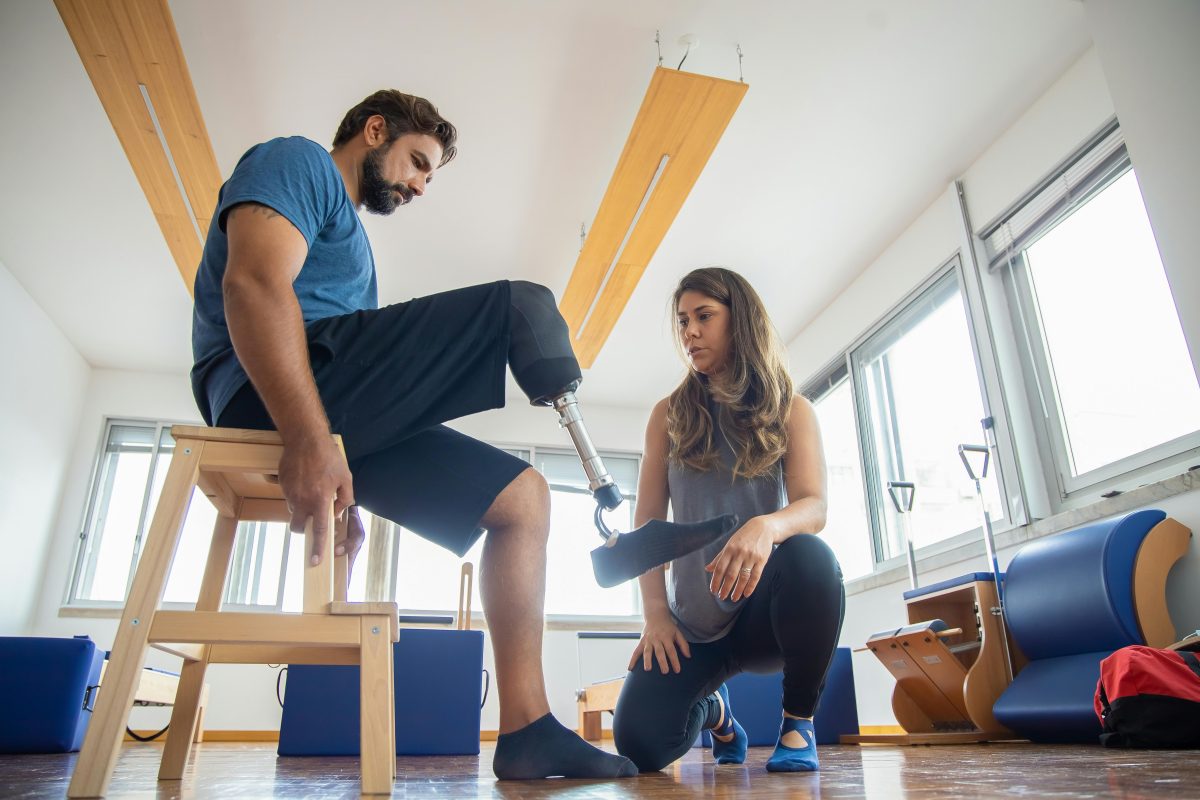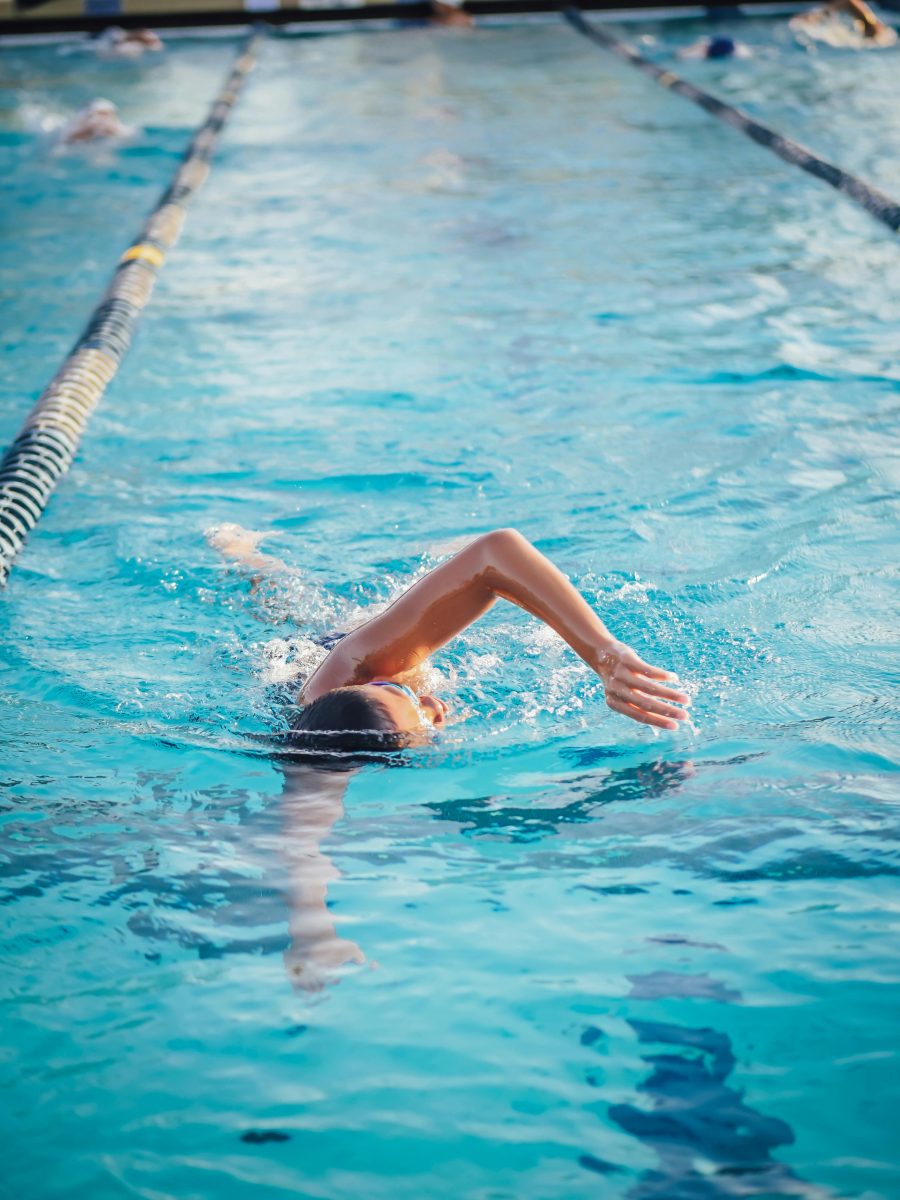Last Updated on: 14th July 2024, 09:30 am
Introduction to Low-Impact Exercise and Recovery

Low-impact exercise, characterized by its gentle approach on the joints, stands as a beacon for those seeking fitness without strain. It’s the cornerstone for individuals aiming to maintain or improve their physical condition, minimizing the risk of injury. Among its myriad benefits, the importance of recovery in physical fitness cannot be overstated. Recovery is not merely a pause but a crucial phase where the body heals, strengthens, and rejuvenates, paving the way for consistent progress.
Swimming emerges as a quintessential example of low-impact exercise, embodying the essence of gentle yet effective physical activity. Its buoyancy reduces stress on the body, allowing for a comprehensive workout that feels as refreshing as it is beneficial. This aquatic adventure engages multiple muscle groups simultaneously, enhancing cardiovascular health, muscle tone, and flexibility without the harsh impact of gravity. Swimming, therefore, not only serves as a formidable ally in the quest for physical fitness but also as a sanctuary for recovery and rejuvenation.
The Science Behind Swimming and Recovery

How Swimming Affects the Body
Swimming is a symphony of motion, a full-body exercise that harmonizes strength, endurance, and flexibility. The water’s embrace offers a unique resistance, challenging muscles in a way that land exercises cannot. This resistance is key; it ensures that every stroke and kick is a step towards building muscle without the wear and tear associated with high-impact activities.
The Role of Water Resistance in Muscle Recovery
Imagine the water as a gentle, yet firm, masseuse, working through muscle tension and aiding recovery. The resistance provided by water enhances circulation, flushing out toxins and bringing nutrients to tired muscles. This process accelerates recovery, reducing the time needed between workouts and diminishing the risk of overuse injuries. It’s a nurturing cycle of exertion and healing, set to the rhythm of your strokes.
Benefits of Buoyancy for Injured or Weak Joints
Buoyancy is the unsung hero for those with injured or weak joints. In the aquatic realm, the body experiences a delightful lightness, reducing joint stress to nearly negligible levels. This buoyant support allows for movement and exercise that might be impossible on land, offering a path to recovery and strength that respects the body’s current limitations. It’s a testament to swimming’s rehabilitative powers, providing a safe haven for healing and growth.
Swimming, with its gentle caress and challenging embrace, stands as a pillar of low-impact exercise. It offers a sanctuary for those in recovery, a place where the body can heal, strengthen, and emerge rejuvenated. The science behind it is clear: swimming is not just an exercise but a holistic journey towards wellness.
Swimming Techniques for Optimal Recovery

Different Strokes and Their Benefits
- Breaststroke: With its smooth, gliding motion, is particularly gentle on the joints, making it ideal for those starting their recovery journey.
- Freestyle: Promotes cardiovascular health and builds endurance.
- Backstroke: Aligns the spine and strengthens the back muscles.
Importance of Proper Form to Prevent Further Injury
Proper form is not just about efficiency; it’s a safeguard against further injury. Incorrect technique can strain muscles and joints, undoing the benefits of swimming as a recovery tool. For instance, a poorly executed freestyle can lead to shoulder issues, while an incorrect breaststroke technique can exacerbate knee problems. Mastery of form, therefore, is essential, ensuring that each stroke contributes positively to the healing process.
Tailoring Swimming Routines for Specific Recovery Goals
Recovery is not a one-size-fits-all process. A tailored swimming routine, designed with specific recovery goals in mind, can significantly enhance the rehabilitation journey. For those recovering from a leg injury, focusing on arm strokes with the support of a buoy can maintain fitness levels without stressing the injured limb. Conversely, individuals looking to strengthen their back may benefit from incorporating more backstrokes into their routine. Consulting with a physical therapist or a trained coach can help in designing a swimming program that aligns with individual recovery goals, ensuring progress is both effective and measured.
Mental Health Benefits of Swimming

Swimming as a Stress Reliever
Diving into the pool, the world’s noise fades, replaced by the soothing sound of water. This transformation is not just physical but deeply psychological. Swimming acts as a powerful stress reliever, with the rhythmic nature of strokes serving as a form of moving meditation. It encourages a focus on breath and movement, drawing the mind away from daily stressors and into a state of mindfulness.
The Psychological Benefits of Water-Based Exercise
- The psychological uplift experienced during and after swimming is profound.
- The water’s buoyancy creates a sense of weightlessness, offering a reprieve from life’s burdens.
- The endorphin release triggered by physical activity further enhances this effect, leaving swimmers with a lasting sense of well-being.
Impact on Sleep and Overall Mental Well-Being
Regular swimmers often report improved sleep patterns, a critical component of mental health. The physical exertion of swimming promotes deeper, more restful sleep, aiding in the body’s recovery processes. This improved sleep quality, in turn, supports overall mental well-being, contributing to better mood, higher energy levels, and enhanced cognitive function. The cumulative effect of these benefits is significant, positioning swimming not just as a physical activity but as a holistic practice for mental and emotional recovery.
Swimming, with its unique combination of stress relief, psychological uplift, and sleep improvement, stands out as a multifaceted tool for enhancing mental health. It’s a testament to the power of water-based exercise in supporting not just the body’s recovery, but the mind’s as well. As part of a comprehensive approach to wellness, swimming offers a path to a more balanced, healthy life.
Incorporating Swimming into Your Recovery Plan

Consulting with Healthcare Professionals
Before diving into the pool, it’s crucial to seek advice from healthcare professionals. They can provide personalized guidance, ensuring swimming complements your recovery without risk. This step is foundational, setting the stage for a safe and effective rehabilitation journey.
Starting Slow and Gradually Increasing Intensity
Embarking on your aquatic journey, start with gentle laps. The goal is to acclimate your body, allowing it to embrace the water’s support. Gradually, as strength and confidence build, increase the intensity. This approach fosters resilience, minimizing the risk of setbacks.
Balance is key in recovery. Swimming, while beneficial, should be part of a broader rehabilitation strategy. Incorporating other forms of exercise, tailored to your specific needs, ensures a holistic approach. This blend of activities promotes overall wellness, accelerating the path to recovery.
Swimming, in its gentle embrace, offers a unique avenue for recovery. By consulting professionals, starting slow, and balancing your rehabilitation plan, you harness the power of water. This journey, marked by patience and perseverance, leads to renewed strength and vitality.
Success Stories: Real-life Examples of Recovery Through Swimming

Testimonials from Individuals
- Sarah: “Swimming didn’t just rebuild my body; it healed my spirit,” she shares, her voice a testament to the transformative power of water.
- Michael: “In the water, I found peace. It’s where I fought my way back to a normal life,” he reflects, gratitude evident in his eyes.
Insights from Professionals
- Lisa (Physical Therapist): “It’s a full-body workout that’s as gentle as it is effective,” she says, noting the benefits of swimming for recovery.
- Mark (Trainer): “We can adjust the strokes and intensity to fit the individual’s recovery needs,” highlighting the adaptability of swimming.
These stories and expert insights underscore the profound impact swimming can have on recovery. It’s not just about the physical benefits; it’s about reclaiming life’s quality, stroke by stroke. As part of a comprehensive recovery plan, swimming stands out as a beacon of hope, guiding individuals back to their best selves.
In Closing
Swimming transforms recovery into rejuvenation. It marries physical healing with mental solace, offering a sanctuary for both body and mind. Through the gentle resistance of water, individuals navigate the delicate balance of pushing limits while fostering recovery, embarking on a journey that strengthens not just muscles, but resilience. Success stories and professional insights underscore swimming’s role in not only restoring physical function but enhancing life’s quality. Let this be a call to embrace the healing waters, where every stroke is a step towards a stronger, healthier self.
Swimming for Recovery: Low-Impact Benefits FAQs
Yes, swimming can significantly aid in the recovery of joint injuries by providing a low-impact environment that reduces stress on the joints. The buoyancy of water supports the body, minimizing the risk of further injury and allowing for a wider range of motion during rehabilitation. This makes it an ideal form of exercise for enhancing joint flexibility and strength without imposing additional strain.
Swimming can significantly help in weight management during recovery by burning calories and building muscle in a low-impact setting. It engages multiple muscle groups simultaneously, increasing metabolic rate both during and after exercise, which aids in fat loss and prevents muscle atrophy associated with inactivity during recovery periods. This makes it an excellent option for maintaining or achieving a healthy weight without putting undue stress on recovering tissues.
Swimming improves cardiovascular health during recovery by providing a comprehensive aerobic workout that increases heart rate and promotes blood circulation. This aerobic activity strengthens the heart and lungs, ensuring oxygen is efficiently distributed throughout the body, which is crucial for healing and regaining physical fitness. Moreover, it can be easily adjusted to match an individual’s recovery pace, making it suitable for varying levels of post-injury or post-surgery rehabilitation.
Swimming benefits mental health during recovery by releasing endorphins, which are natural mood lifters, reducing feelings of depression and anxiety. The rhythmic nature of swimming and immersion in water can also have a meditative effect, helping to alleviate stress and promote a sense of well-being. This psychological boost is essential for a holistic recovery, as mental health is intrinsically linked to physical health.
Water temperature can significantly affect swimming for recovery, as warmer water can help relax muscles and ease pain, making it ideal for recovery from injury or surgery. Conversely, cooler water might be refreshing and invigorating but may not be suitable for all types of recovery, especially where muscle relaxation and pain relief are desired. Therefore, choosing a swimming environment with an appropriate water temperature is important to maximize the therapeutic benefits of swimming for recovery.
For effective recovery, it is generally recommended to swim two to three times a week, allowing sufficient rest days in between for the body to heal and adapt. This frequency can be adjusted based on individual recovery goals, physical condition, and the advice of healthcare professionals. Consistency in swimming sessions helps in gradually building strength and endurance, contributing to a more efficient recovery process.
Swimming is highly effective for post-surgery recovery, particularly for surgeries related to the musculoskeletal system. It facilitates gentle, controlled movements that can help maintain muscle tone and improve circulation while avoiding the impact and strain associated with many land-based exercises. Engaging in swimming can accelerate the healing process by promoting flexibility and endurance in a safe manner.
Swimming is suitable for individuals of all ages during recovery, offering a versatile and adaptable form of exercise that can be tailored to meet specific rehabilitation needs. For children and seniors especially, swimming provides a safe and enjoyable way to recover, improving not only physical strength and flexibility but also confidence in movement. Its low-impact nature ensures that it is accessible and beneficial, regardless of age or fitness level.
Swimming for recovery from chronic illnesses can lead to significant improvements in overall physical condition, including enhanced stamina, muscle strength, and joint mobility. It serves as a gentle yet effective way to exercise without exacerbating symptoms, making it particularly beneficial for conditions like arthritis, fibromyalgia, and chronic fatigue syndrome. Additionally, the therapeutic qualities of water can help in managing pain and reducing the severity of chronic symptoms.
When swimming for recovery, it is crucial to consult with a healthcare provider to ensure it is safe to begin, and to follow any specific guidelines they provide. Starting with gentle, short sessions and gradually increasing intensity and duration as recovery progresses is important to avoid overexertion. Additionally, paying attention to proper technique and possibly working with a qualified instructor can help prevent new injuries and ensure the most benefit from swimming exercises.
Orlando is a all round athlete from Australia, now resident in Germany. His sports of passion of American Football(Offensive line), weight training and indoor rock climbing where he uses his 195cm wing span to his advantage.



